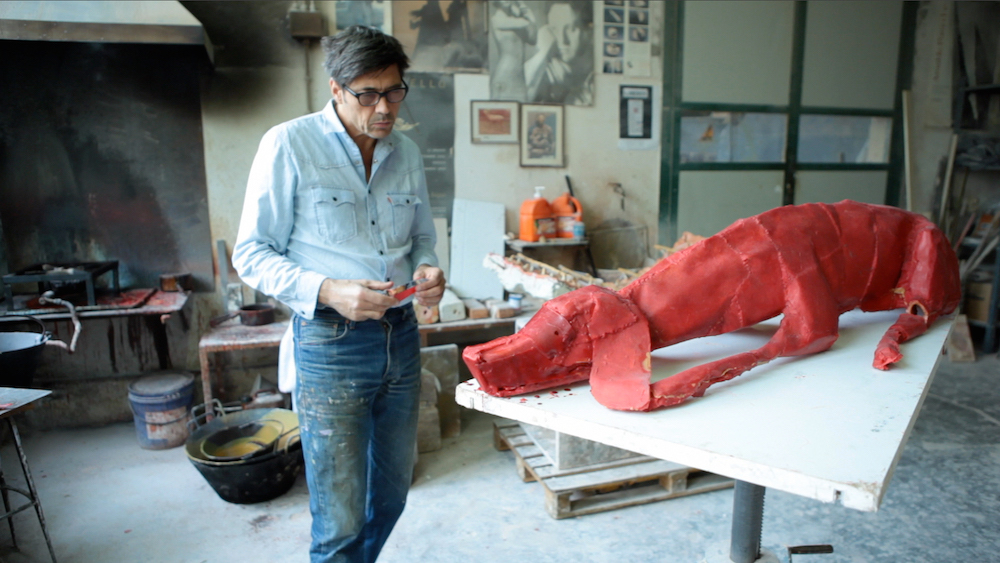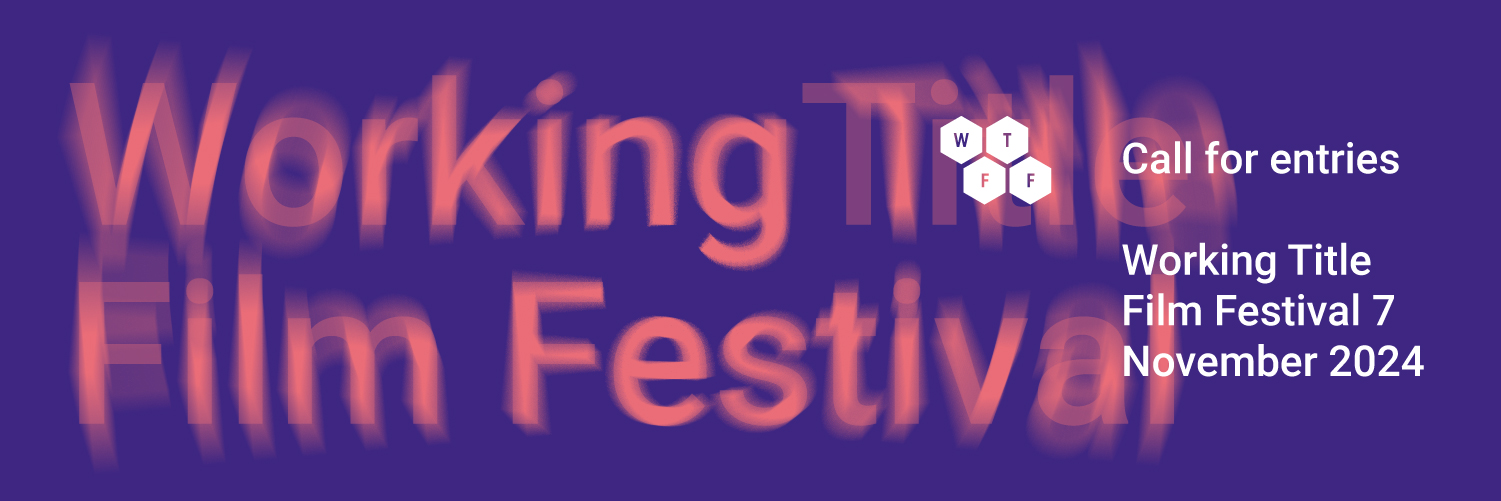Hand Gestures, Francesco Clerici, 77′, Italia 2015
Observational documentary, that follows as if it was a sensorial experience, the process of creating one of Velasco Vitali’s sculptures, from the wax to the final glaze, at Fonderia Artistica Battaglia.
Cinema Primavera, wednesday 27th april 21.00, thursday 28th april 9.00,thursday 28th april 19.00
Title Hand Gestures
Duration 77 minutes
Year 2015
Country Italy
Genre Documentary
Language Italian
Director Francesco Clerici
Screenwriter Francesco Clerici
DOP Francesco Clerici
Sound Michele Brambilla, Mattia Pontremoli, Emanuele Pullini, Fortuna Fontò, Francesco Mangini
Editing Francesco Clerici
Sound Editing Michele Brambilla, Mattia Pontremoli, Emanuele Pullini, Fortuna Fontò, Francesco Mangini, Massimo Mariani
Music Claudio Gotti
Cast Velasco Vitali e gli artigiani della Fonderia Artistica Battaglia di Milano / Velasco Vitali and the artisans of the Fonderia Artistica Battaglia
Production Francesco Clerici, Velasco Vitali, Fonderia Artistica Battaglia
Distribution Lab80
Festival
Berlin International Film Festival, London Film Festival, Sarajevo Film Festival, Loft Film Festival (Tucson, Arizona), Viennale, RIDM Montreal, Bergamo Film meeting, Vilnius film festival Kino Pavasaris, Festival Cinematografico dell’Uruguay, Docville Internationaal documentaire filmmestival, Dok.fest Munchen, MFF T-Mobile New Horizons Film Festival Wroclaw, Montréal International Documentary Film Festival, Cork film Festival, La Valletta Film Festival, Minsk international Film Festival “Listapad”, Euganea Film Festival, Film Festival del Garda, Cinecity Brighton Film Festival, Bellaria Film Festival, Kolkata International Film Festival, Festival Internazionale Cinema di Frontiera di Marzamemi, Mantova Film Festival, Laceno d’oro, OFF cinema festival Poznan, Talento Emergente Cineteca Mexico, 2morrow Film Festival Moscow, Asolo Art Film Festival, Milano Design Film Festival, Donnafugata Film Festival, Sciacca Film Festival.
Awards FIPRESCI international critic award Berlinale 2015, Menzione d’onore Miglior documentario sull’arte Asolo Film Festival
Web Site www.ilgestodellemani.com
Synopsis
This documentary film follows the process of creating one of Velasco Vitali’s famous dog sculptures, from wax to glazed bronze, at Fonderia Artistica Battaglia (Battaglia Artistic Foundry), in Milan. The film observes the work of a group of skilled artisans in this 100-year old foundry and reveals the ancient traditions of bronze sculpture making, unchanged since the Sixth century B.C.
Director’s Statement
Il Gesto delle Mani wants to be both scientific and (or rather: especially) narrative: it describes the life and work within the Fonderia Artistica Battaglia, a historic place in Milan and currently under the management of the FAI – Italian Artistic Foundation-, which looks after historic and artistic sites. This film describes the noise and the passing time of a working day in the foundry. The artisans who work there are depicted only through their work, their faces and their movements.
The story of a bronze dog
The process of “giving birth and re-birth” to the dog sculpture, which is the process of the red wax dog turning into the bronze one, is fascinating to me because it looks like an ancient holy ritual in an old church. An abstract gospel to life and to birth.
Velasco Vitali’s sculptures of dogs are famous in Italy, and to me seemed a perfect vessel by which the viewer can travel through the process of it being made.
This journey is possible thanks to these artisan’s culture, knowledge and love of their craft. As the Italian historical sculptor Giacomo Manzù once said, «Sculpture is not a concept. Sculpture is the hand gesture. A gesture of love. In the gesture of the body lays the relationship with the world, the way you see it, the way you feel it, the way you own it».
Story of the production
During the shoot we didn’t want to disrupt the artisan’s work, so initially I was alone filming. I spent days in Fonderia Battaglia as a foundry employee and I confess I wondered if I should stop shooting and apply for a job, as I was completely hypnotized by their rhythm of their gestures whilst working.
After five years of working with Velasco Vitali and constantly sharing ideas, I decided to shoot some footage in the Foundry and after he loved the initial cuts we decided to create a feature documentary based on capturing the various artistic and scientific processes.
Velasco supported me in various roles on this film – as producer, advisor, sculptor and “actor”. In the beginning of the process, everything starts from modelling the dog sculpture in wax and ends with the finished sculpture joining a “pack” of other dog sculptures.
I involved other “artisans” such as five young sound engineers, a physic and bass player -Claudio Gotti-, my high-school classmate Giacomo Tincani who is great designer and wine producer. At the end I showed the documentary to Jon Barrenechea and to Ena Dozo: they accepted to be our executive producers.
This film is very much a “family business” production, with a very low budget and a very high level of cooperation. We refused to give the project to bigger film companies that were interested as Velasco Vitali and Matteo Visconti di Modrone wanted to produce the film themselves, allowing for more freedom. The production started in February 2013 and finished in November 2014.
I didn’t want to provide narration or any chapter interruption (as production companies would have asked me to): I wanted the story of the “birth” of the bronze dog to pass in front of the spectator as a unique flow, where this process becomes an abstract presence lost in the gestures of the job and in this medieval location.
Director’s choices
Stefano Crespi, Italian critic of art history, speaking of the workers of the Fonderia Battaglia said: «Unforgettable workers, inside their own rite, in austere silence of the word».
The film attempts to present images and sound in this austere silence and those rites in an environment out of time. For this reason I did not use extra-diegetical soundtrack and favor the fixed camera (with few movements functional to the rhythm). I tried to use the focus sometimes in an apparently “wrong” way and to make few “dirty” shots, alternating them with very precise and “clean” shots. I also decided to cut out some moments from the “didactically predictable” chronological order.
This is not an essay on how to create a bronze sculpture
There’s a moment, just right before the foundry phase, where I edited the process in a cryptic manner: you’ll understand later what happened before. Somehow I tried to create (strange perhaps for a 77-minute documentary with almost no dialogue and no music) a thriller-like suspense. Well, I tried.
Archive Footage
The archive material was found only after the filming of the present day footage. But I was sure, once I found it, that it would be perfectly placed in the gestures and rituals of foundry work today. The lost-wax casting has not changed since the pre-historic period, the process is the same. And the location of all footage (past and present) is at Fonderia Artistica Battaglia.
The 16mm footage by TV camera operator Sergio Arnold is the only old footage I found about artistic foundry work in Italy. I searched in Archivio Luce, in the Home Movies archive in Bologna, in RAI (Italian Radio and Television) in Milan and Rome: nothing else exists in Italy about this. We were about to give up on the research when I received a phone call from the Battaglia Foundry telling me that in a basement they found this 16mm film. I couldn’t find any other old footage about a foundry anywhere in Italy and the only existing one was in the basement of the same foundry I was shooting in. So this old footage was also made in the same Foundry: same gestures, same process, same location. Almost half a century before.
This 16mm film had no audio, so I tried to insert the soundscape of today’s foundry onto the 1967 film, matching the moments of the processes. I showed it initially to friends and no one noticed that the sound was not the original one. It was exactly what I wanted: a clear temporal continuity that creates a sort of “outside of time” moment. The past and the present are two entities that are completely mixed in the work in the foundry and this is observed in the documentary.

Director’s bio-filmography
Francesco Clerici (Milan, 1983) earned a Master’s Degree in Art History and Criticism from the University of Milan with a thesis on Buster Keaton’s influence on contemporary art. Since 2003 he has presented a film club and led filmmaking workshops for children.
Francesco is a writer, a documentary filmmaker and since 2009 is also the collaborator and the project manager for the artist Velasco Vitali. For Vitali’s last exhibition catalogue Foresta Rossa: 416 città fantasma nel mondo (Skira, 2013) he published a series of short novels Città Fantasma (Ghost Cities).
Since 2009 Francesco has collaborated with CICAE (International Federation of Arthouse Cinemas), documenting and developing training for exhibitors in Venice each year. He has been a member in their jury for the 17th Sarajevo Film Festival, 69 Mostra del Cinema di Venezia, 17th Kino Pavasaris Vilnius film festival, and for the Annecy Cinema Italièn 2013.
His 2011 short film Storie nel Cemento (Cement Stories) won the of the FAI -Italian Artistic Foundation- prize at the Milano Film Festival and was selected for various documentary film festivals. In 2012 he published his first book, 24 Fotogrammi: storia aneddotica del cinema.
Il Gesto delle Mani, his first feature documentary, won the FIPRESCI award at Berlinale Forum 2015 and has been selected in many festivals around the world, such as the London Film Festival, Viennale, RIDM Montreal, Sarajevo Film Festival and the New Horizons Film Festival.
